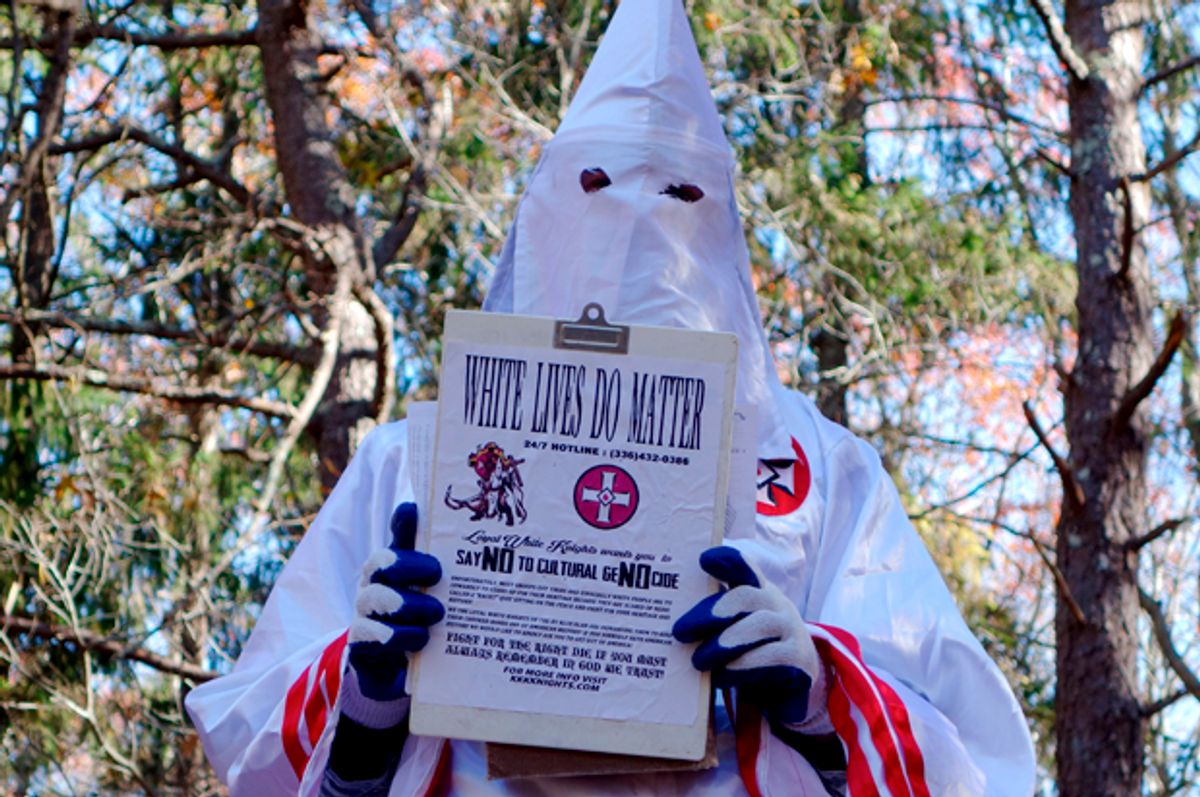“Go home. We need Americans here!” white supremacist Jeremy Joseph Christian yelled at two black women — one wearing a hijab — on a train in Portland, Oregon, in May. According to news reports, when several commuters tried to intervene, he went on a rampage, stabbing three people. Two of them died.
If the fatal stabbing was the worst racist attack in Portland this year, it was by no means the only one. In March, Buzzfeed reported on hate incidents in Oregon and the state’s long history as a haven for white supremacists. Some of the incidents they found were gathered by Documenting Hate, a collaborative journalism project we launched earlier this year.
Documenting Hate is an attempt to overcome the inadequate data collection on hate crimes and bias incidents in America. We’ve been compiling incident reports from civil-rights groups, as well as news reports, social media and law enforcement records. We’ve also asked people to tell us their personal stories of witnessing or being the victim of hate.
It’s been about six months since the project launched. Since then, we’ve been joined by more than 100 newsrooms around the country. Together, we’re verifying the incidents that have been reported to us — and telling people’s stories.
We’ve received thousands of reports, with more coming every day. They come from cities big and small, and from states blue and red. People have reported hate incidents from every part of their communities: in schools, on the road, at private businesses, in the workplace. ProPublica and our partners have produced more than 50 stories using the tips from the database, from New York to Seattle, Minneapolis to Phoenix. Some examples:
Univision, HuffPost, and The New York Times opinion section identified a common thread in the reports we’ve received in which people of color are harassed “Go back to your country.” This type of harassment affects both immigrants and U.S. citizens alike, reporters found.
Several stories published by our partners focused on racial harassment on public transportation, using tips to illustrate something officials were also seeing. The New York City Commission on Human Rights observed a 480 percent increase in claims of discriminatory harassment between 2015 and 2016, according to The New York Times Opinion section. The Massachusetts Bay Transportation Authority recorded 24 cases of offensive graffiti through April, compared to 35 in all of last year, the Boston Globefound. Univision covered multiple incidents involving Latinos targeted in incidents on the New York City subway.
Combing through our database, Buzzfeed discovered there were dozens of reported incidents in K-12 schools in which students cited President Donald Trump’s name or slogans to harass minority classmates. This echoed a pattern Univision had reported on: In November, the Teaching Tolerance project at the Southern Poverty Law Center received more than 10,000 responses to an educator survey indicating an uptick in anti-Semitic, anti-Muslim and anti-immigrant activity in schools.
Our local partners reported on how hate incidents affect communities across the country: anti-Semitic graffiti in Phoenix, Islamophobia in Minneapolis, racist vandalism and homophobic threats in Seattle, white supremacist activity at a California university, racist harassment and vandalism in Boston, racism in the workplace in New Orleans, and hate incidents throughout Florida.
There are a few questions for which answers continue to elude us: How many hate crimes happen each year, and why is the record keeping so inadequate?
The FBI, which is required to track hate crimes, counts between 5,000 and 6,000 of them annually. But the Bureau of Justice Statistics estimates the total is closer to 250,000. One explanation for the gap is that many victims — more than half, according to a recent estimate — don’t report what happened to them to police.
Even if they do, law enforcement agencies aren’t all required to report to the FBI, meaning their reports might never make it into the national tally. The federal government is hardly a model of best practices; many federal agencies don’t report their data, either — even though they’re legally required to do so.




Shares